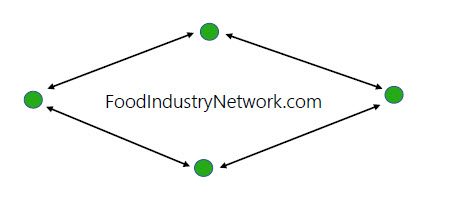Sticky business | Farmtario

Mother Nature teased producers with a banner maple syrup season before lobbing an ice-storm curve ball at the end of March.
Prolonged ice rain across a large swath of central Ontario left over 600,000 people without power for several days and maple syrup producers scrambling to assess damage to sugar bush infrastructure and trees.
Why it matters: Ontario’s maple syrup industry is resilient, with improvements in technology and marketing, but isn’t exempt by impacts from tariffs or Mother Nature.
Read Also

Wind, snow load provisions could add building costs in Ontario
Updates to the National Farm Building Code on wind load, snow load and fire protection requirements will increase costs for some new farm buildings.
“I have heard from some it is the end of their season because of the damage,” said John Williams, Ontario Maple Syrup Producers’ Association executive director. “This would mean a 30 to 50 per cent loss depending on location, plus the costs and labour to make repairs.”
Others, such as Williams, sustained moderate damage and expect to tap the bush next year, with a smaller percentage foreseeing an interruption in maple syrup production while the trees recover.
William doesn’t anticipate the ice storm triggering bankruptcies; however, there is a troubling trend of financial shock impacts related to weather, the pandemic and political uncertainty leading to the retirement of sugar bush operators.
Pefferlaw Creek Farms, owned and operated by John Tomory and his brothers, spans more than 1000 tappable acres split between two locations, the central processing farm in Uxbridge and the production operation in Haliburton.
Two seasons ago, John Tomory of Pefferlaw Creek Farms experienced a 30 per cent production loss at their Uxbridge location due to a devastating tornado. The financial consequences linger despite infrastructure repairs and a new 1,000-acre sugar bush launched in Haliburton the following season.
He’s optimistic that February’s deep snow and a prolonged thaw will keep forests colder for longer, delaying budding for a potentially higher yield, resulting in a full financial recovery. In the days before the late March storm, Tomory was philosophical in finding the sap-filled lining of a potentially devastating ice rain cloud.
“After freezing rain, you get really, really significant flows of sap. So, on the one hand, yes, we run the risk of losing trees and branches and all the rest of it,” Tomory said. “But on the other, good flows often come after the freezing rain.”
Sault Ste. Marie producer Kyle Gilbertson expected the storm to hit his 600-acre sugarbush hard. However, by Sunday, March 30, he texted that ice buildup was manageable, but potential wind damage remained a concern.
While the two maple syrup producers share the same weather concerns, the threat of tariffs and impact on market access differ.
Tomory sells most maple syrup products within British Columbia and Ontario and is the exclusive sap supplier for Sap Sucker beverages crafted in Flesherton, Ont.
“(Sap Sucker) represents an enormous percentage of our yield, probably 30 to 40 per cent,” explained Tomory, adding cornering the market included a significant investment into an ultra-filtration system, which few operations have, to produce shelf-stable sap.
Tariff troubles
Williams said that unlike Quebec, which exports large volumes of syrup to the U.S., Ontario only makes about 50 per cent of what we consume.
“If a glut of syrup happens due to the tariffs, prices for syrup in Ontario could be pushed down or at least not increase at the same rates as our costs,” he explained. “We could feel some pressure here, but not as much as Quebec.”
Gilbertson exports products to the United States and can see tariffs indirectly impacting the industry through increased fuel, material, and necessary input costs.
“When you’ve got such a huge market like the States on a land border right next door, that’s pretty convenient compared to having to ship to other parts of the world,” Gilbertson shared. “It’s hard to say what will happen, but it’s going to affect it somehow, and not likely for the better.”
Gilbertson said producers have limited control over the tariffs beyond utilizing their vote. Otherwise, it’s more of a wait-and-see situation.
“There’s a lot of people that put a lot of hard work into it (maple syrup production) every year,” he said. “If they (consumers) keep putting it on their pancakes, that’s a good thing.”
Steve Brackenridge, a maple syrup producer and Ontario Federation of Agriculture (OFA) director, recently encouraged consumers to look for the “Sweet Ontario” label in an OFA commentary.
The designation indicates Ontario-made maple products and supports OFA’s Home Grown campaign, which aims to educate consumers about the importance of preserving Ontario’s farmland.
He said “Home Grown” products offer a goodness that mass-produced alternatives cannot match.
“By choosing local, you are supporting these small businesses and helping to keep these traditions alive,” he said. He added that Ontario produces approximately 1.7 million litres of maple syrup annually and is Canada’s second-largest maple syrup-producing province.
He added the Sweet Ontario label ensures a flavour that reflects the province’s terroir, distinctive soils, and climate, adding that Ontario sap is processed using clean, efficient technologies that promote forest sustainability.
“Sweet Ontario maple syrups have zero preservatives or additives, so rest assured, Ontario maple syrup is one of the most pure farm products around,” Brackenridge wrote.
Source: Farmtario.com


